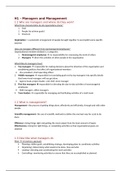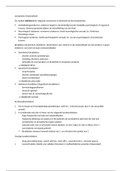Samenvatting
Summary Fundementals of management
- Instelling
- Wageningen University (WUR)
Samenvatting Fundamentals of Management. Management Myths Debunked! Tenth edition, 10e editie. Stephen P. Robbins, Mary Coulter, David A. DeCenzo. Global edition. Pearson. Bruikbaar voor het vak MCB van de Wageningen University. H1 t/m 7
[Meer zien]















